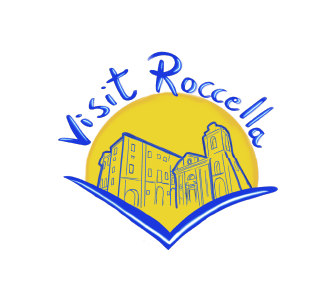translated with AI
The first certain mention attesting to the presence of this Palace is derived from the Appraisal of the state of Roccella 1707-23:
“Surrounding said City in the gardens and vineyards, there are many houses and cottages of particular note, among which is the cottage of Doctor Vittorio di Simone, very well constructed, and at his expense, the construction of a Church has been started.”
The mentioned Church is that of St. Lucia, originally established as a private chapel of the de Simone family. This cult dates back to when the Chapel of St. Lucia Virgin and Martyr in the church of St. Caterina de Battenti and Ospedale within the City was assigned in 1560 by Antonello Carcaramo, later passed to procurator Giovanni de Simone through a notarial instrument dated January 21, 1564.
Before the birth of Abbot Ilario, the small church gave its name to the Santa Lucia district. The transfer of ownership of the de Simone Palace likely occurred after the marriage between D. Isabella de Simone, daughter of D. Giovanni Vittorio and Claudia Palermo, with Giovan Francesco Manfrè.
In the early 1700s, during income declaration obligations, the widow of Giovan Francesco, the Magnificent D. Isabella (de) Simone declared living with the rest of the family in said Cottage. She confirmed revenues from around fifty tomolate of land scattered in Roccella’s territory, mostly leased out. The most productive included six tomolate with olive trees in Tuppo district yielding six olive presses, as well as thirty tomolate of land with olive trees producing four presses in S. Onofrio district, along with a tomolata with 700 grapevines for family use.
It is noteworthy that the de Simone family followed a custom of the time, practiced by Carafa, religious institutions, and affluent families, allowing ordinary citizens to build houses on their properties for a fee.
Upon D. Isabella’s death, the land assets, palace, and church passed to her son D. Gaetano Manfrè. The earthquake of 1783 spared both the palace and its attached church, allowing them to remain habitable.
In 1798, after royal approval, the Confraternity of St. Joseph and Souls in Purgatory was established to settle in St. Lucia Church. Notable founding members included physician D. Francesco Maria Manfrè who held patronage rights over this oratory.
Due to logistical reasons, this Confraternity later settled in the Church of Concezione instead.
In early 1800s during the introduction of a new provisional cadastre, Dr. D. Francesco Maria Manfrè declared ownership of a palace consisting of 5 grand rooms, a kitchen, and a ground floor alongside two grand rooms and a ground floor. Additionally, there were seven small cottages likely representing concessions granted to Roccella citizens for house construction on their land.
Throughout its history, the Church received attention from various visiting Bishops to Roccella who noted that this private oratory was well-maintained.
The Church remained open on St. Lucia’s day attracting people from Croce and Ciaramidio districts. The start of Mass on that day was signaled by ringing a small bell placed in its bell tower above the entrance door bearing a lion holding a heart-shaped figure between its front paws dating back to 1601 – attributed to the Manfrè family.
The transfer of all Manfrè properties including palace and church occurred following the marriage on February 7th, 1826 between D. Vincenzo Alicastro, a surgeon physician, and D. Giuditta Manfrè.
The Alicastro family was part of artisans who migrated to Roccella during the 1700s with mastro Ilario being their progenitor from Castelvetere along with Caterina Pasqualino residing near Carafa’s palace on Città during mid-1700s.
After de Simone-Manfrè era ended – now extinct – during 1800s and 1900s it became known as “Palazzo Alicastro,” although its use and ownership changed in recent decades. The last resident owner was D. Rachele Alicastro who passed away in the 1950s leading to Avvocato Pietro Muscolo acquiring it subsequently transformed into an inn known as Hotel Bristol by some. Following adaptations and modifications converting much of its ground floor into an event hall for receptions and weddings – after closing as a hotel – it began its slow decline.
It is hoped that this Palace which played a significant role in Roccella’s history can return to its former glory days.
